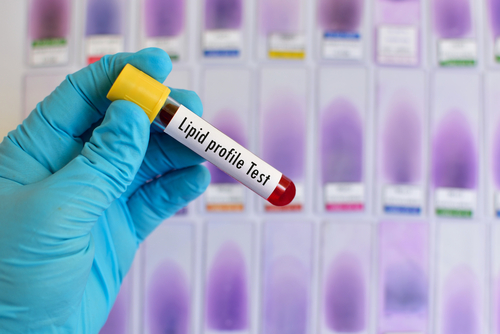Fat Molecules May Hold Diagnostic and Treatment Potential for ALS, French Review Concludes

Fat molecules appear to play a role in the development of ALS, which means that targeting them could be a way to treat the disease, French researchers concluded in a review of studies on the topic.
This is particularly true of derivations of the fat molecule cholesterol known as oxysterols, which are involved in cell signaling, the researchers added.
The University of Bourgogne team noted that fat molecules help regulate important cell mechanisms in healthy and diseased tissue. But scientists have yet to fully explore their role in many neurodegenerative diseases, including ALS. That role interests researchers because of its therapy-targeting potential, the team said.
Their review appeared in the journal Frontiers in Molecular Neuroscience. They titled it “Biomarkers of Amyotrophic Lateral Sclerosis: Current Status and Interest of Oxysterols and Phytosterols.”
Previous studies have suggested that cholesterol may play a role in the mechanisms underlying ALS. Cholesterol is a waxy fat molecule that the body needs to build cells, but too much of it can cause heart and other problems. There are three kinds of cholesterol — LDL, HDL and triglycerides.
A Swedish study showed that people with elevated levels of LDL, or bad cholesterol, are at higher risk of developing ALS.
Some studies have found a correlation between higher levels of total cholesterol and LDL and ALS. The results are controversial, though, because other researchers have failed to find these same results. In addition, the findings seemed to be dependent on patients’ gender and age.
Fat molecules do appear to play a part in ALS, however — as signaling molecules and components of cell structure.
Studies in mice and in tissue samples collected from ALS patients have shown that high levels of cholesterol and other fat molecules alter cell membranes’ ability to let substances in and out. The change not only may affect the way cells behave but also how they communicate with each other.
Oxidative stress may also play a role in the cell signaling leading to ALS. Scientists define oxidative stress as an imbalance between the body’s production of potentially harmful reactive oxygen species, or free radicals, and its ability to counter them.
Oxidative stress on cholesterol leads to the creation of signaling molecules known as oxysterols. They are able to pass through the blood-brain barrier, which is designed to prevent harmful invaders from reaching the brain, and target the central nervous system.
One study showed that an oxysterol called 25-hydroxycholesterol can actually trigger the death of nerve cells and accelerate the progression of ALS in mice. The study also showed that ALS patients have higher levels of 25-hydroxycholesterol and molecules known as lipids in their blood and cerebral spinal fluid than healthy people. Lipids include fats, oils, waxes, certain vitamins, hormones and most of the non-protein membrane of cells.
“These various data strongly suggest a possible involvement of oxysterols in ALS and their potential use as biomarkers,” the researchers said. “Further studies are needed to assess whether blood may be sufficient to use this type of biomarker,” they added.
In general, the researchers said they believe that there is enough evidence to support the notion that fat molecules, in particular oxysterols, could yield important information for diagnosing ALS and could lead to treatments for the disease.






